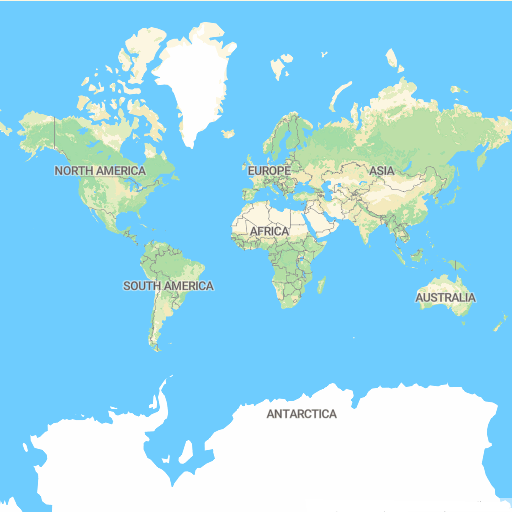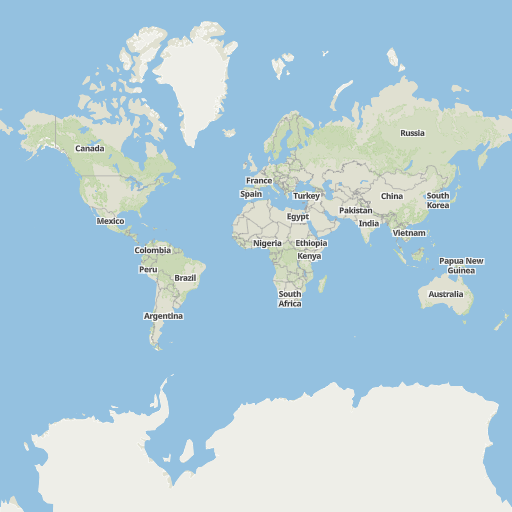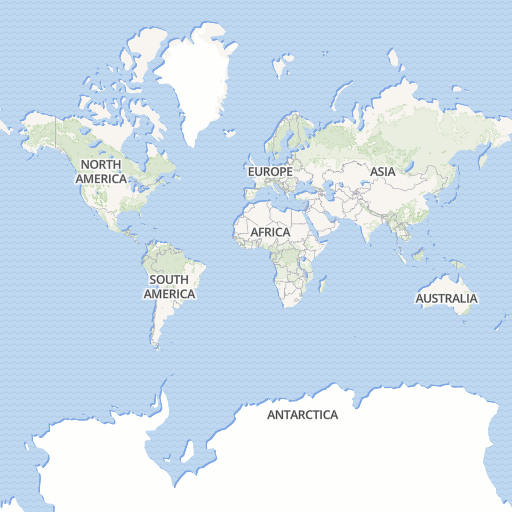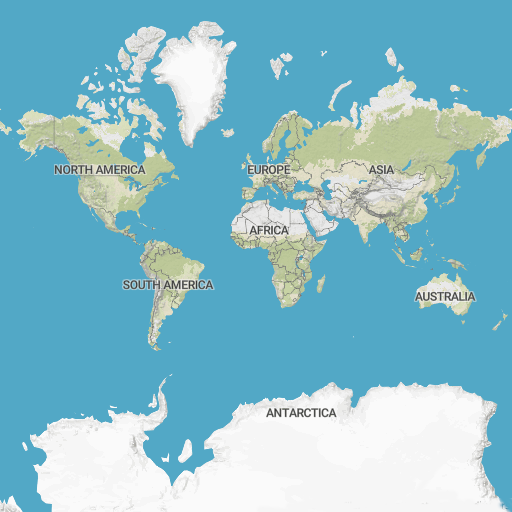MapTiler Planet schema
The vector tile schema describes how the vector data is organized into different thematic layers and which attribute and values each layer contains. This is useful for writing a map style.
MapTiler Planet is a tileset containing general layers containing topographic information. It is built to use as a general context of a map for daily life or as a base of visualization for your data.
Explore the tileset in the interactive map viewer, check the date of the last update, use it as vector tiles, etc.
Inspect MapTiler Planet schema
Maps with this tileset
Definition of layers
The MapTiler Planet tileset contains the following layers:
aerodrome_label #
Fields
name
The OSM name value of the aerodrome. Language-specific values are in name:xx (please see the languages section).
name_en
English name name:en if available, otherwise name. This is deprecated and will be removed in a future release in favor of name:en.
name_de
German name name:de if available, otherwise name or name:en. This is deprecated and will be removed in a future release in favor of name:de.
class
Distinguish between more and less important aerodromes.
Class is derived from the value of
aerodrome
and aerodrome:type tags.
Possible values:
internationalpublicregionalmilitaryprivateother
iata
3-character code issued by the IATA.
icao
4-letter code issued by the ICAO.
ele
Elevation (ele) in meters.
ele_ft
Elevation (ele) in feet.
aeroway #
Aeroway polygons based of OpenStreetMap aeroways. Airport buildings are contained in the building layer but all other airport related polygons can be found in the aeroway layer.
Fields
ref
The OSM ref tag of the runway/taxiway.
class
The original value of
aeroway or
area:aeroway tag.
Possible values:
aerodromeheliportrunwayhelipadtaxiwayaprongate
boundary #
Contains administrative boundaries as linestrings.
OSM boundaries (boundary=administrative)
are present from z0 to z14.
OSM data contains several admin_level
but for most styles it makes sense to just style admin_level=2 and admin_level=4.
Fields
admin_level
OSM admin_level
indicating the level of importance of this boundary.
The admin_level corresponds to the lowest admin_level the line participates in.
adm0_l
State name on the left of the border. For country boundaries only (admin_level = 2).
adm0_r
State name on the right of the border. For country boundaries only (admin_level = 2).
disputed
Mark with 1 if the border is disputed.
Possible values:
01
disputed_name
Field containing name of the disputed area (extracted from border relation in OSM, without spaces).
For country boundaries only (admin_level = 2).
Possible values will be provided on request.
claimed_by
ISO2 code of country, which wants to see the boundary line.
For country boundaries only (admin_level = 2).
maritime
Mark with 1 if it is a maritime border.
Possible values:
01
building #
All OSM Buildings. All building tags are imported (building=*).
Only buildings with tag location:underground are excluded.
Fields
render_height
An approximated height from levels and height of the building or building:part.
render_min_height
An approximated height from minimum levels or minimum height of the bottom of the building or building:part.
colour
Colour
hide_3d
If True, building (part) should not be rendered in 3D. Currently, building outlines are marked as hide_3d.
globallandcover #
Landcover with generalized polygons up to zoom 9 with classes - Crop, grass, scrub, tree, forest, snow.
Fields
class
Use the class to assign natural colors for globallandcover.
Possible values:
cropgrassscrubtreeforestsnow
housenumber #
Everything in OpenStreetMap which contains a addr:housenumber tag useful for labelling housenumbers on a map.
This adds significant size to z14. For buildings the centroid of the building is used as housenumber.
Duplicates within a tile are dropped if they have the same street/block_number (records without name tag are prioritized for preservation).
Fields
housenumber
Value of the addr:housenumber tag. If there are multiple values separated by semi-colons, then the first and the last values are separated by a dash.
landcover #
Landcover is used to describe the physical material at the surface of the earth. At lower zoom levels this is
from Natural Earth data for glaciers and ice shelves and at higher zoom levels the landcover is implied by OSM tags. The most common use case for this layer
is to style wood (class=wood) and grass (class=grass) areas.
Fields
class
Use the class to assign natural colors for landcover.
Possible values:
farmlandicewoodrockgrasswetlandsand
subclass
Use subclass to do more precise styling.
Original value of either the
natural,
landuse,
leisure,
or wetland tag.
Possible values:
allotmentsbare_rockbeachbogdunescrubshrubberyfarmfarmlandfellforestgardenglaciergrassgrasslandgolf_courseheathmangrovemarshmeadoworchardparkplant_nurseryrecreation_groundreedbedsalternsaltmarshsandscreeswamptidalflattundravillage_greenvineyardwet_meadowwetlandwood
landuse #
Landuse is used to describe use of land by humans. At lower zoom levels this is
from Natural Earth data for residential (urban) areas and at higher zoom levels mostly OSM landuse tags.
Fields
class
Use the class to assign special colors to areas.
Original value of either the
landuse,
amenity,
leisure,
tourism,
place
or waterway tag.
Possible values:
railwaycemeterymilitaryresidentialcommercialindustrialgaragesretailbus_stationschooluniversitykindergartencollegelibraryhospitalstadiumpitchplaygroundtracktheme_parkzoosuburbquarterneighbourhooddamquarry
mountain_peak #
Fields
name
The OSM name value of the peak. Language-specific values are in name:xx (please see the languages section).
name_en
English name name:en if available, otherwise name. This is deprecated and will be removed in a future release in favor of name:en.
name_de
German name name:de if available, otherwise name or name:en. This is deprecated and will be removed in a future release in favor of name:de.
class
Use the class to differentiate between natural objects.
Possible values:
peakvolcanosaddleridgecliffarete
ele
Elevation (ele) in meters.
ele_ft
Elevation (ele) in feet.
customary_ft
Value 1 for peaks in location where feet is used as customary unit (USA).
Possible values:
1None
rank
Rank of the peak within one tile (starting at 1 that is the most important peak).
park #
The park layer contains natural and protected areas from OpenStreetMap,
such as parks tagged with boundary=national_park,
boundary=protected_area,
or leisure=nature_reserve.
Fields
class
Use the class to differentiate between different kinds of features in the parks layer.
The class for boundary=protected_area parks is the lower-case of the
protection_title
value with blanks replaced by _.
national_park is the class of protection_title=National Park and boundary=national_park.
nature_reserve is the class of protection_title=Nature Reserve and leisure=nature_reserve.
The class for other protection_title
values is similarly assigned.
name
The OSM name value of the park (point features only). Language-specific values are in name:xx (please see the languages section).
name_en
English name name:en if available, otherwise name (point features only). This is deprecated and will be removed in a future release in favor of name:en.
name_de
German name name:de if available, otherwise name or name:en (point features only). This is deprecated and will be removed in a future release in favor of name:de.
rank
Rank of the park within one tile, starting at 1 that is the most important park (point features only).
place #
The place layer consists out of countries, states, cities and islands. Apart from the roads this is also one of the more important layers to create a beautiful map. We suggest you use different font styles and sizes to create a text hierarchy.
Fields
name
The OSM name value of the place. Language-specific values are in name:xx (please see the languages section).
name_en
English name name:en if available, otherwise name. This is deprecated and will be removed in a future release in favor of name:en.
name_de
German name name:de if available, otherwise name or name:en. This is deprecated and will be removed in a future release in favor of name:de.
capital
The capital field marks the
admin_level
of the boundary the place is a capital of.
Possible values:
23456
class
Original value of the
place tag.
Distinguish between continents, countries, states, islands and
places like settlements or smaller entities.
Use class to separately style the different places and build
a text hierarchy according to their importance.
Possible values:
continentcountrystateprovincecitytownvillagehamletboroughsuburbquarterneighbourhoodisolated_dwellingisland
iso_a2
Two-letter country code ISO 3166-1 alpha-2. Available only for class=country.
Original value of the
country_code_iso3166_1_alpha_2 tag.
rank
Countries, states and the most important cities all have a
rank to boost their importance on the map.
The rank field for countries and states ranges from
0 to 6 while the rank field for cities ranges from
1 to 10 for the most important cities
and continues from 10 serially based on the
local importance of the city (derived from population and city class).
You can use the rank to limit density of labels or improve
the text hierarchy.
A special case is rank 0 for class state which indicates regions in France, Italy, Spain, or the United Kingdom.
poi #
Points of interests containing a of a variety of OpenStreetMap tags. Mostly contains amenities, sport, shop and tourist POIs.
Fields
name
The OSM name value of the POI. Language-specific values are in name:xx (please see the languages section).
name_en
English name name:en if available, otherwise name. This is deprecated and will be removed in a future release in favor of name:en.
name_de
German name name:de if available, otherwise name or name:en. This is deprecated and will be removed in a future release in favor of name:de.
class
More general classes of POIs. If there is no more general class for the subclass
this field will contain the same value as subclass.
But for example for schools you only need to style the class school to filter the subclasses school
and kindergarten. Or use the class shop to style all shops.
Possible values:
shopofficetown_hallgolffast_foodparkbusrailwayaerialwayentrancecampsitelaundrygrocerylibrarycollegelodgingice_creampostcafeschoolalcohol_shopbarharborcarhospitalcemeteryattractionbeermusicstadiumart_galleryclothing_storeswimmingcastleatmfuel
subclass
Original value of either the
amenity,
barrier,
historic,
information,
landuse,
leisure,
railway,
shop,
sport,
station,
religion,
tourism,
aerialway,
building,
highway,
office
or waterway
tag. Use this to do more precise styling.
rank
The POIs are ranked ascending according to their importance within a grid. The rank value shows the
local relative importance of a POI within it’s cell in the grid. This can be used to reduce label density at z14.
Since all POIs already need to be contained at z14 you can use less than rank=10 epxression to limit
POIs. At some point like z17 you can show all POIs.
agg_stop
Indicates main platform of public transport
stops (buses, trams, and subways). Grouping of platforms is
implemented using
uic_ref tag that
is not used worldwide.
Possible values:
1
level
Original value of level tag.
layer
Original value of layer tag.
indoor
Original value of indoor tag.
Possible values:
1
transportation #
transportation contains roads, railways, aerial ways, and shipping
lines.
This layer is directly derived from the OSM road hierarchy.
It contains all roads from motorways to primary, secondary and
tertiary roads to residential roads and
foot paths. Styling the roads is the most essential part of the map.
The transportation layer also contains polygons for features like plazas.
Fields
class
Distinguish between more and less important roads or railways and roads under construction.
Class is derived from the value of the
highway,
construction,
railway,
aerialway,
route tag (for
shipping ways),
busway, or
man_made.
Possible values:
motorwaytrunkprimarysecondarytertiaryminorpathservicetrackracewaybuswaybus_guidewayferrymotorway_constructiontrunk_constructionprimary_constructionsecondary_constructiontertiary_constructionminor_constructionpath_constructionservice_constructiontrack_constructionraceway_construction
subclass
Distinguish more specific classes of railway and path:
Subclass is value of the
railway,
highway (for paths), or
public_transport (for platforms) tag.
Possible values:
railnarrow_gaugepreservedfunicularsubwaylight_railmonorailtrampedestrianpathfootwaycyclewaystepsbridlewaycorridorplatformferry (DEPRECATED - use class)
network
The network type derived mainly from network tag of the road.
See more info about us-*,
ca-transcanada,
gb-*,
or ie-*.
brunnel
Mark whether way is a tunnel or bridge.
Possible values:
bridgetunnelford
oneway
Mark with 1 whether way is a oneway in the direction of the way,
with -1 whether way is a oneway in the opposite direction of the way
or not a oneway with 0.
Possible values:
1-1
ramp
Mark with 1 whether way is a ramp (link or steps)
or not with 0.
Possible values:
1
service
Original value of the service tag.
Possible values:
spuryardsidingcrossoverdrivewayalleyparking_aisle
access
Access restrictions on this road. Supported values of the
access tag are no and private,
which resolve to no.
Possible values:
no
toll
Whether this is a toll road, based on the toll tag.
Possible values:
1
expressway
Whether this is an expressway, based on the expressway tag.
Possible values:
1
layer
Original value of the layer tag.
level
Experimental feature! Filled only for steps and footways. Original
value of the level tag.
indoor
Experimental feature! Filled only for steps and footways. Original
value of the indoor tag.
Possible values:
1
bicycle
Original value of the bicycle tag (highways only).
foot
Original value of the foot tag (highways only).
horse
Original value of the horse tag (highways only).
mtb_scale
Original value of the mtb:scale tag (highways only).
surface
Values of surface tag devided into 2 groups paved (paved, asphalt, cobblestone, concrete, concrete:lanes, concrete:plates, metal, paving_stones, sett, unhewn_cobblestone, wood) and unpaved (unpaved, compacted, dirt, earth, fine_gravel, grass, grass_paver, gravel, gravel_turf, ground, ice, mud, pebblestone, salt, sand, snow, woodchips).
Possible values:
pavedunpaved
transportation_name #
This is the layer for labelling the highways. Only highways that are named name=* and are long enough
to place text upon appear. The OSM roads are stitched together if they contain the same name
to have better label placement than having many small linestrings.
For motorways you should use the ref field to label them while for other roads you should use name.
Fields
name
The OSM name value of the highway.
name_en
English name name:en if available, otherwise name. This is deprecated and will be removed in a future release in favor of name:en.
name_de
German name name:de if available, otherwise name or name:en. This is deprecated and will be removed in a future release in favor of name:de.
ref
The OSM ref tag of the motorway or its network.
ref_length
Length of the ref field. Useful for having a shield icon as background for labeling motorways.
network
The network type derived mainly from network tag of the road.
See more info about us-*,
ca-transcanada,
or gb-*.
Possible values:
us-interstateus-highwayus-stateca-transcanadaca-provincial-arterialca-provincialgb-motorwaygb-trunkgb-primaryie-motorwayie-nationalie-regionalroad (default)
class
Distinguish between more and less important roads and roads under construction.
Possible values:
motorwaytrunkprimarysecondarytertiaryminorservicetrackpathracewaymotorway_constructiontrunk_constructionprimary_constructionsecondary_constructiontertiary_constructionminor_constructionservice_constructiontrack_constructionpath_constructionraceway_constructionrailtransitmotorway_junction
subclass
Distinguish more specific classes of path:
Subclass is value of the
highway (for paths),
and “junction” for motorway junctions.
Possible values:
pedestrianpathfootwaycyclewaystepsbridlewaycorridorplatformjunction
brunnel
Mark whether way is a bridge, a tunnel or a ford.
Possible values:
bridgetunnelford
level
Experimental feature! Filled only for steps and footways. Original
value of level tag.
layer
Experimental feature! Filled only for steps and footways. Original
value of layer tag.
indoor
Experimental feature! Filled only for steps and footways. Original
value of indoor tag.
Possible values:
1
route_1_network
1st route concurrency network.
route_1_ref
1st route concurrency ref.
route_1_name
1st route concurrency name.
route_1_colour
1st route concurrency colour.
route_2_network
2nd route concurrency network.
route_2_ref
2nd route concurrency ref.
route_2_name
2nd route concurrency name.
route_2_colour
2nd route concurrency colour.
route_3_network
3rd route concurrency network.
route_3_ref
3rd route concurrency ref.
route_3_name
3rd route concurrency name.
route_3_colour
3rd route concurrency colour.
route_4_network
4th route concurrency network.
route_4_ref
4th route concurrency ref.
route_4_name
4th route concurrency name.
route_4_colour
4th route concurrency colour.
route_5_network
5th route concurrency network.
route_5_ref
5th route concurrency ref.
route_5_name
5th route concurrency name.
route_5_colour
5th route concurrency colour.
route_6_network
6th route concurrency network.
route_6_ref
6th route concurrency ref.
route_6_name
6th route concurrency name.
route_6_colour
6th route concurrency colour.
water #
Water polygons representing oceans and lakes. Covered watered areas are excluded (covered=yes).
On low zoom levels all water originates from Natural Earth. To get a more correct display of the south pole you should also
style the covering ice shelves over the water.
On higher zoom levels water polygons from OpenStreetMapData are used.
Fields
id
OSM ID value of the lake.
class
All water polygons from OpenStreetMapData have the class ocean.
The water-covered areas of flowing water bodies with the water=river,
water=canal,
water=stream,
water=ditch, or
water=drain tags are classified as river. Wet and dry docks
tagged waterway=dock are classified as a dock.
Various minor waterbodies are classified as a pond.
Swimming pools tagged leisure=swimming_pool are classified as a swimming_pool
All other water bodies are classified as lake.
Possible values:
dockriverpondlakeoceanswimming_pool
intermittent
Mark with 1 if it is an intermittent water polygon.
Possible values:
01
brunnel
Identifies the type of crossing as either a bridge or a tunnel.
Possible values:
bridgetunnel
water_name #
Lake center lines for labelling lake bodies. This is based of the osm-lakelines project which derives nice centerlines from OSM water bodies. Only the most important lakes contain labels.
Fields
name
The OSM name value of the water body. Language-specific values are in name:xx (please see the languages section).
name_en
English name name:en if available, otherwise name. This is deprecated and will be removed in a future release in favor of name:en.
name_de
German name name:de if available, otherwise name or name:en. This is deprecated and will be removed in a future release in favor of name:de.
class
Distinguish between lake, ocean, bay, strait, and sea.
Possible values:
lakebaystraitseaocean
intermittent
Mark with 1 if it is an intermittent lake.
Possible values:
01
waterway #
OpenStreetMap waterways for higher zoom levels (z6 and more)
and Natural Earth rivers and lake centerlines for low zoom levels (z3 - z5).
Linestrings without a name or which are too short are filtered
out at low zoom levels.
Till z11 there is river class only, in z12 there is also canal generated,
starting z13 there is no generalization according to class field applied.
Waterways do not have a subclass field.
Fields
name
The OSM name value of the waterway. Language-specific values are in name:xx (please see the languages section).
name_en
English name name:en if available, otherwise name. This is deprecated and will be removed in a future release in favor of name:en.
name_de
German name name:de if available, otherwise name or name:en. This is deprecated and will be removed in a future release in favor of name:de.
class
The original value of the waterway tag.
Possible values:
streamrivercanaldrainditch
brunnel
Mark whether way is a tunnel or bridge.
Possible values:
bridgetunnel
intermittent
Mark with 1 if it is an intermittent waterway.
Possible values:
01
languages #
List of possible languages available in MapTiler Planet.
Read more in the article about Change language in a map.
Fields
name_
Special forms of names are always included if there is a name.
These values are used in style as e.g. {name_latin} or {name_int}
Possible values:
latin(Latin script of the name)int(International form of the name)
name:
name: + abbreviation of language.
Possible values:
am(Amharic)ar(Arabic)az(Azerbaijani)be(Belorussian)bg(Bulgarian)bn(Bengali)br(Breton)bs(Bosnian)ca(Catalan)co(Corsican)cs(Czech)cy(Welsh)da(Danish)de(German)el(Greek)en(English)eo(Esperanto)es(Spanish)et(Estonian)eu(Basque)fa(Persian)fi(Finnish)fr(French)fy(Western Frisian)ga(Irish)gd(Scottish Gaelic)he(Hebrew)hi(Hindi)hr(Croatian)hu(Hungarian)hy(Armenian)id(Indonesian)is(Icelandic)it(Italian)ja(Japanese)ja_kana(Japanese Kana form)ja_rm(romanization of Japanese)ja-Latn(romanisation of Japanese since 2018)ja-Hira(Japanese Hiragana form)ka(Georgian)kk(Kazakh)kn(Kannada)ko(Korean)ko-Latn(romanization of Korean)ku(Kurdish)la(Latin)lb(Luxembourgish)lt(Lithuanian)lv(Latvian)mk(Macedonian)mt(Maltese)ml(Malayalam)nl(Dutch)"no"(Norwegian)oc(Occitan (post 1500))pa(Punjabi)pnb(Western Punjabi)pl(Polish)pt(Portuguese)rm(Romansh)ro(Romania)ru(Russian)sk(Slovak)sl(Slovene)sq(Albanian)sr(Serbian, Cyrillic)sr-Latn(Serbian)sv(Swedish)ta(Tamil)te(Telugu)th(Thai)tr(Turkish)uk(Ukrainian)ur(Urdu)vi(Vietnamese)zh(Chinese)zh-Hant(Traditional Chinese)zh-Hans(Simplified Chinese)
License
With the use of this API, you must visibly credit these attributions:





